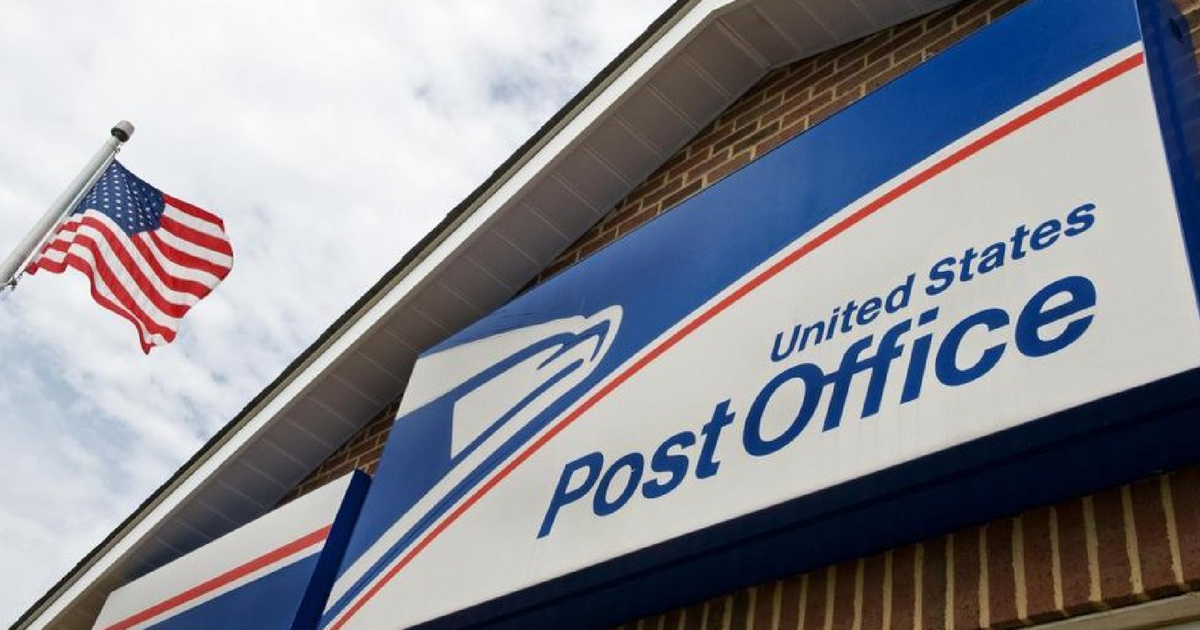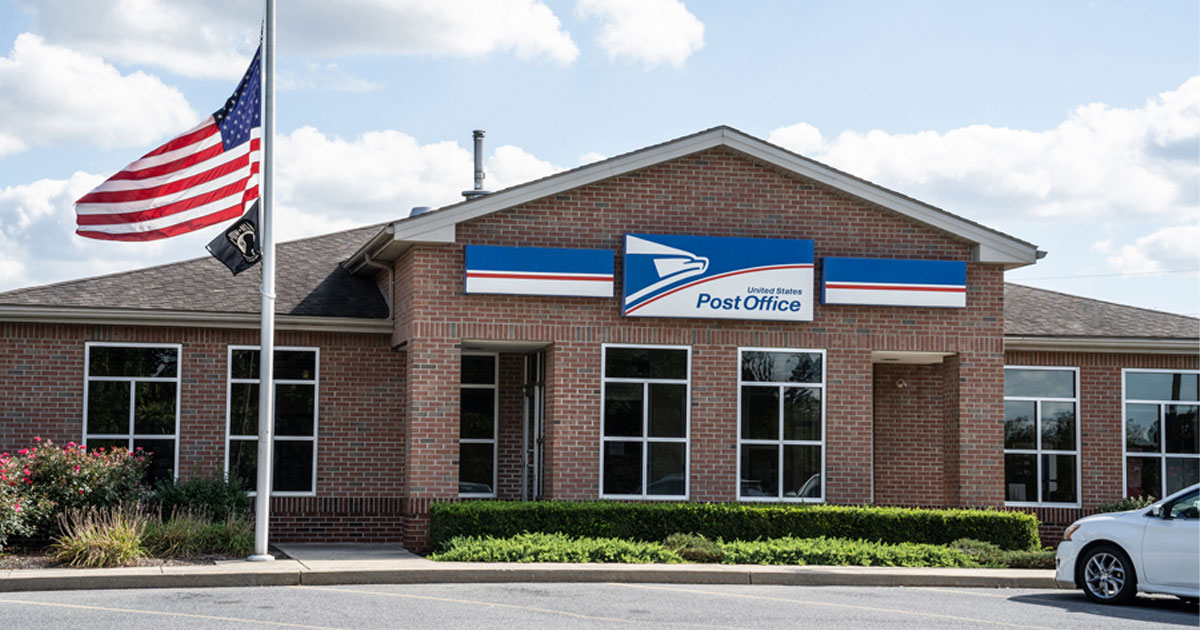Everything You Need To Know About The US Postal Service: Your Ultimate Guide
When it comes to delivering letters, packages, and everything in between, the US Postal Service is the backbone of communication for millions of Americans. From its humble beginnings to becoming a modern-day logistics powerhouse, the USPS plays a crucial role in connecting people across the nation. Whether you're sending a birthday card or tracking an international package, the USPS has got your back. But how much do you really know about this iconic service? Let's dive into the details!
Think about the last time you received a package or sent a letter. Chances are, the USPS was involved somewhere along the way. With over 600,000 employees and a network that spans every corner of the country, this organization is no small operation. But what makes the USPS tick? How does it manage to deliver mail to over 160 million addresses every day? We'll break it all down for you, so you can appreciate just how amazing this service really is.
Before we dive deeper, let’s set the stage. The USPS isn’t just another delivery service—it’s a historical institution that has been around since the days of George Washington. It’s woven into the fabric of American life, and its impact is felt by everyone, from small business owners to everyday citizens. So, whether you’re curious about its history, services, or future challenges, you’re in the right place. Let’s get started!
Read also:Bryan Adams Personal Life A Deep Dive Into The Life And Legacy Of The Iconic Musician
USPS: A Brief History
The US Postal Service has a storied past that dates back to 1775 when Benjamin Franklin was appointed the first Postmaster General. Back then, delivering mail was a far cry from the high-tech systems we have today. Riders on horseback would carry letters across long distances, often facing harsh weather and dangerous terrain. Over time, the service grew and evolved, adapting to the changing needs of the nation.
By the 19th century, the USPS had expanded its reach, introducing innovations like the Pony Express and later, the railroad mail service. These developments helped connect distant parts of the country, making communication faster and more reliable. Today, the USPS continues to innovate, embracing technology to meet the demands of a digital age while maintaining its commitment to universal service.
Key Milestones in USPS History
- 1775: Benjamin Franklin appointed as the first Postmaster General
- 1860: Introduction of the Pony Express
- 1918: Start of airmail service
- 1970: Establishment of the modern USPS as an independent agency
Understanding USPS Services
So, what exactly does the USPS offer? Well, it’s more than just your standard mail delivery. From First-Class Mail to Priority Mail Express, the USPS provides a wide range of services tailored to different needs. Whether you need to send a document overnight or ship a large package domestically or internationally, the USPS has got options for you.
One of the standout features of the USPS is its commitment to universal service. Unlike private carriers, the USPS delivers to every address in the country, no matter how remote. This ensures that everyone, regardless of location, has access to essential mail services. It’s a promise that sets the USPS apart and underscores its importance in connecting communities.
Types of USPS Mail Services
- First-Class Mail: Ideal for letters and small packages
- Priority Mail: Faster delivery for larger items
- Priority Mail Express: Overnight delivery for urgent needs
- Parcel Select: Cost-effective option for bulk shipments
How Does USPS Operate?
Behind the scenes, the USPS operates like a well-oiled machine. With a network of over 31,000 post offices and hundreds of processing facilities, the service handles billions of pieces of mail each year. But how does it all come together? It starts with sorting and processing, where advanced technology plays a key role.
Automated sorting machines can process thousands of letters per hour, ensuring that mail is delivered quickly and efficiently. Once sorted, the mail is loaded onto trucks, planes, or trains, depending on the destination. From there, it’s delivered by mail carriers who cover their routes on foot, by vehicle, or even by boat in some areas.
Read also:Border Collie And Corgi Mix The Ultimate Guide To This Unique Hybrid Breed
Technology and Innovation in USPS Operations
The USPS isn’t resting on its laurels when it comes to technology. Recent years have seen significant investments in automation and digital tools to enhance efficiency. For example, the Click-N-Ship service allows customers to print their own shipping labels at home, saving time and trips to the post office. Additionally, the USPS is exploring drone delivery and electric vehicles as part of its commitment to sustainability.
USPS Rates and Pricing
One of the most common questions people have about the USPS is how much it costs to send mail or packages. The good news is that the USPS offers competitive pricing across its various services. For example, sending a standard letter via First-Class Mail costs just under a dollar, making it one of the most affordable options available.
When it comes to packages, the cost depends on factors like size, weight, and distance. However, the USPS provides calculators on its website to help customers estimate costs before they ship. This transparency helps businesses and individuals plan their budgets more effectively.
Factors Affecting USPS Pricing
- Weight of the item
- Distance to the destination
- Type of service chosen (e.g., First-Class vs. Priority Mail)
USPS Tracking and Delivery
Tracking your mail has never been easier thanks to the USPS’s advanced tracking system. Whether you’re waiting for an important document or a gift for a loved one, you can keep tabs on its journey every step of the way. Simply enter the tracking number on the USPS website, and you’ll receive updates on the status of your package.
Delivery times vary depending on the service you choose and the distance involved. For example, Priority Mail Express guarantees overnight delivery within the contiguous United States, while First-Class Mail typically takes 1-3 days. These options give customers flexibility to choose the speed that suits their needs.
Enhancing the Customer Experience
The USPS is constantly striving to improve the customer experience. Recent initiatives include expanded hours at post offices, more self-service kiosks, and enhanced mobile apps. These efforts aim to make interacting with the USPS as convenient and seamless as possible.
Challenges Facing the USPS
Despite its many strengths, the USPS faces several challenges in today’s fast-paced world. One of the biggest is financial sustainability. With the rise of email and digital communication, the demand for traditional mail has declined, impacting revenue. Additionally, the cost of maintaining such a vast network is significant, putting pressure on the service’s budget.
Another challenge is competition from private carriers like UPS and FedEx. These companies offer similar services but often with different pricing models and features. To stay competitive, the USPS must continue to innovate and adapt to changing market conditions.
Potential Solutions
Experts suggest several strategies to address these challenges. Increasing the use of technology, expanding e-commerce services, and exploring new revenue streams are all possibilities. Additionally, legislative changes could provide the USPS with more flexibility to manage its operations effectively.
USPS and E-Commerce
The rise of e-commerce has presented both opportunities and challenges for the USPS. On one hand, the increase in online shopping has led to a surge in package deliveries, providing a much-needed boost to revenue. On the other hand, the volume of packages has put additional strain on the system, requiring more resources to handle the demand.
To meet these challenges, the USPS has invested in expanding its package handling capabilities and improving delivery efficiency. These efforts have helped it remain a key player in the e-commerce landscape, partnering with major retailers to ensure timely and reliable deliveries.
The Future of USPS in E-Commerce
Looking ahead, the USPS is well-positioned to continue playing a significant role in e-commerce. With ongoing investments in technology and infrastructure, the service is poised to meet the demands of a growing digital marketplace. Additionally, its commitment to universal service ensures that even the most remote areas can participate in the e-commerce revolution.
USPS Sustainability Efforts
In an era of increasing environmental awareness, the USPS is taking steps to reduce its carbon footprint. Initiatives include transitioning to electric vehicles, improving fuel efficiency, and reducing waste in operations. These efforts align with broader goals to promote sustainability across the postal industry.
While progress has been made, there’s still work to be done. The USPS is exploring partnerships with other organizations to share best practices and leverage new technologies. By prioritizing sustainability, the USPS aims to not only reduce its environmental impact but also set an example for others in the industry.
Conclusion
From its rich history to its vital role in modern society, the US Postal Service is a cornerstone of American life. Whether you’re sending a letter, tracking a package, or exploring its many services, the USPS offers something for everyone. While challenges remain, the service continues to innovate and adapt, ensuring its relevance in a rapidly changing world.
So, the next time you drop a letter in the mailbox or receive a package at your door, take a moment to appreciate the incredible work that goes into making it happen. And if you found this guide helpful, don’t forget to share it with others or leave a comment below. Together, let’s keep the conversation going about everything you need to know about the US Postal Service!
Table of Contents
- USPS: A Brief History
- Understanding USPS Services
- How Does USPS Operate?
- USPS Rates and Pricing
- USPS Tracking and Delivery
- Challenges Facing the USPS
- USPS and E-Commerce
- USPS Sustainability Efforts
- The Future of USPS in E-Commerce
- Conclusion


